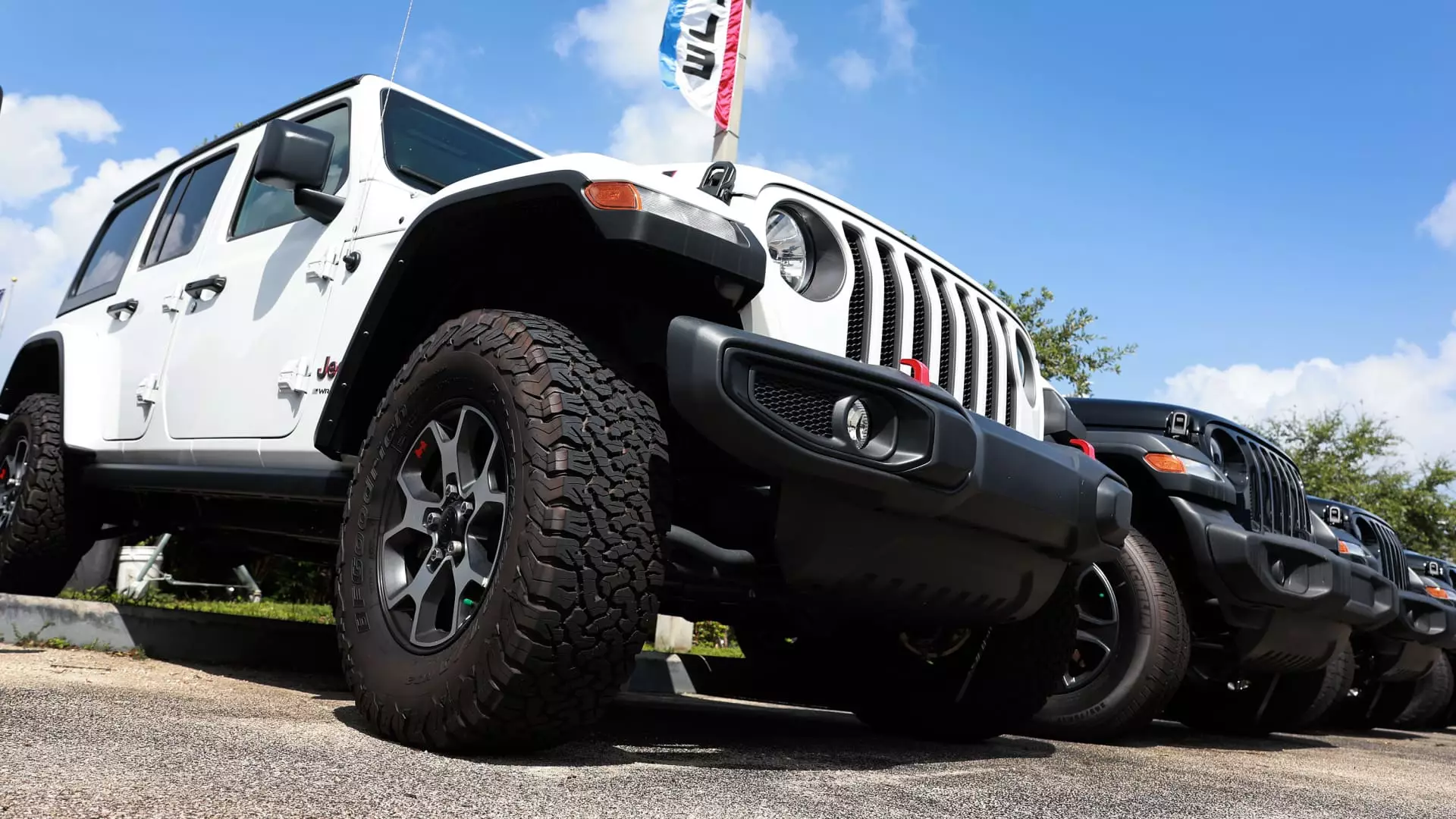The third quarter of 2023 appears to be a tumultuous period for the U.S. automotive market, as industry experts foresee a drop in new vehicle sales. This decline, estimated at approximately 2% compared to the previous year, has raised concerns about the overall health of consumer sentiment amidst rising economic and political uncertainties. Industry giants like Cox Automotive and Edmunds.com project around 3.9 million vehicle sales, marking a 5% decrease from the previous quarter. This situation prompts a closer examination of various underlying factors, particularly the influence of interest rates and consumer purchasing power.
The recent decision by the Federal Reserve to reduce interest rates may provide a glimmer of hope, but experts are cautious about its immediate impact on the auto sales market. Charlie Chesbrough, a senior economist at Cox Automotive, emphasizes that while affordability has improved marginally, it remains a significant hurdle for potential buyers. Many consumers are still faced with the harsh reality that financing a new car typically costs them an average of $40,000, effectively limiting access to new vehicles. Despite these obstacles, the groundwork for a potential recovery exists, suggesting a cautiously optimistic outlook for auto sales as we approach 2024.
Analyzing the Sales Landscape
Forecasters project that sales of light-duty vehicles in the U.S. could total around 15.7 million units in 2024—an adjustment from the previous forecast of 16 million by Cox. This revision underpins the ongoing challenge in a marketplace characterized by high prices and restricted accessibility. Jessica Caldwell from Edmunds highlights that affordability issues are at the forefront of today’s market dynamics, profoundly impacting consumer purchasing power. As a result, many prospective buyers are being pushed out of the new car market altogether.
Although the average transaction price for a new vehicle is slightly down from last year, it remains elevated at approximately $47,870, emphasizing the broader pricing challenges that continue to affect demand. In this context, automakers are wrestling with balancing pricing strategies while attempting to sustain profitability and market share amidst a shifting landscape.
In terms of individual performance, the latter part of 2023 seems poised to reward only a select few automakers. Honda and Ford are anticipated to be among the few major players experiencing growth; conversely, Stellantis, Toyota, and BMW are projected to suffer significant sales declines during this quarter. Stellantis, for instance, could face an astonishing 21% drop in sales compared to the previous year, as CEO Carlos Tavares focuses on prioritizing pricing and profitability over sheer volume—a strategy that has heightened scrutiny amid decreasing sales figures.
Such performance disparities underline the competitive pressures within the automotive sector. As firms adapt to changing consumer tastes and preferences, particularly the rising demand for electric vehicles (EVs), their success may increasingly hinge on their ability to align production and marketing strategies accordingly.
Electric vehicles, while still garnering attention, are not experiencing the exponential growth many analysts had once predicted. Cox estimates a modest 8% increase in EV sales in the third quarter when compared to last year. However, even established players like Tesla, the once-untouchable leader in the EV market, are facing headwinds. Forecasts suggest that Tesla’s market share may dip below 50% for the second consecutive quarter, although EV sales continue to benefit from an increase in incentives that make these vehicles more appealing to consumers.
The average transaction price of EVs is anticipated to be stable year-over-year, yet the incentives offered for their purchase have surged to make up 13.3% of the average transaction price. This environment fosters a unique contrast to traditional vehicles, where incentives usually remain significantly lower. Federal credits and local incentives continue to influence buyer decisions, making electric vehicles a more viable choice for an increasing percentage of consumers seeking environmentally friendly and cost-effective options.
As the automotive market heads into the final quarter of 2023, it is clear that challenges abound. With economic uncertainties, fluctuating interest rates, and affordability constraints casting long shadows over consumer confidence, automakers face a complex landscape that requires strategic agility. While some optimism lingers regarding potential improvements in sales and the sustained growth of electric vehicles, industry stakeholders must navigate these turbulent waters with care. The interplay of pricing, incentives, and consumer behavior will likely dictate the trajectory of auto sales as the market evolves in the months ahead. Understanding these dynamics will be crucial for manufacturers aiming to thrive in an increasingly competitive sector.

